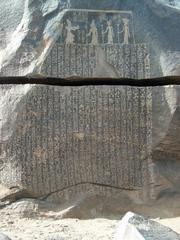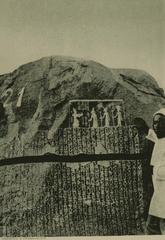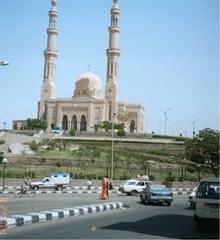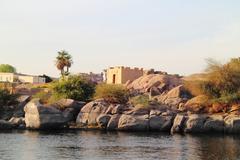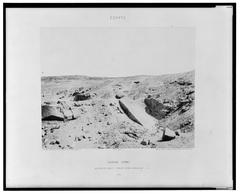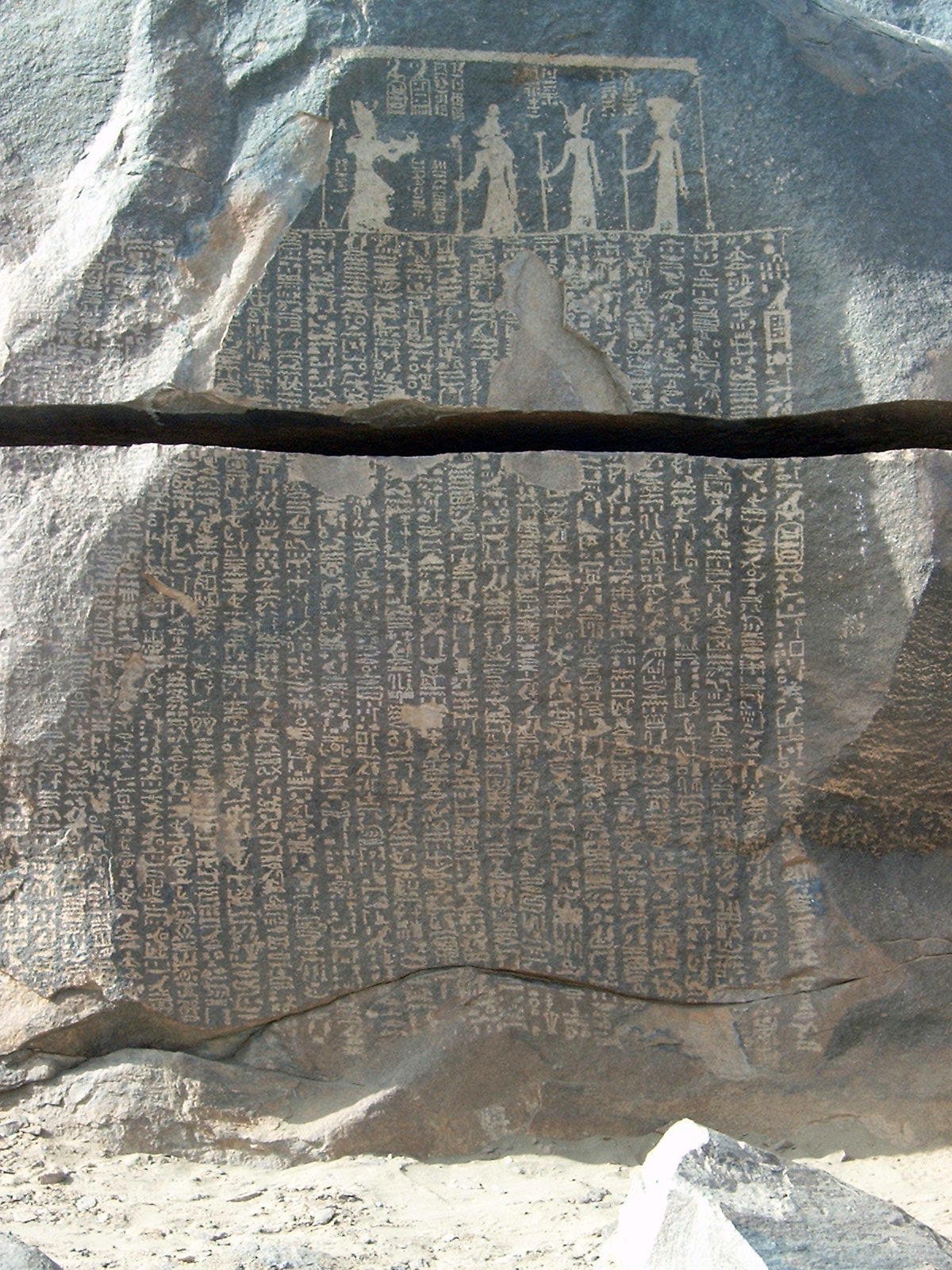
Famine Stela Visiting Hours, Tickets, and Aswan Historical Sites Guide
Date: 15/06/2025
Introduction: Exploring the Famine Stela and Its Historical Significance
The Famine Stela, carved into a granite boulder on Sehel Island near Aswan, Egypt, is one of the most evocative monuments of ancient Egyptian heritage. This inscription, created during the Ptolemaic Period (circa 332–30 BCE) but recounting events from Pharaoh Djoser’s Third Dynasty (c. 2686–2667 BCE), tells the story of a seven-year famine caused by the Nile’s failure to flood. The stela weaves a narrative of crisis, divine intervention, and restoration, reflecting Egypt’s deeply rooted beliefs about the interplay between nature, divinity, and royal authority.
Visiting the Famine Stela is not only an encounter with a relic of the past but also an immersive experience into Egypt’s religious and cultural fabric. This guide offers comprehensive insights into the stela’s historical context, practical visitor information—including visiting hours, ticket details, accessibility, and transportation—and suggestions for integrating your visit into a broader Aswan itinerary. Whether you are a history enthusiast, a scholar, or a curious traveler, this resource will help you plan a memorable and respectful journey to one of Egypt’s most significant open-air inscriptions. (Madain Project; Evendo; Travel2Egypt)
Table of Contents
- Introduction
- The Narrative and Cultural Role of the Famine Stela
- Visitor Guide
- Nearby Attractions
- Transportation and Accommodation
- FAQs
- Visuals and Resources
- Conclusion
- References
The Narrative and Cultural Role of the Famine Stela
Historical Context and Authorship
Carved during the Ptolemaic era but reflecting on Egypt’s Old Kingdom, the Famine Stela records a dramatic episode from Djoser’s reign: a catastrophic seven-year drought. The inscription, attributed to the legendary vizier Imhotep, details Djoser’s quest for guidance and his subsequent revelation that the Nile’s flooding was controlled by the god Khnum, worshipped at Elephantine Island. The stela’s 32 vertical columns of hieroglyphs, topped by a relief of Djoser making offerings to the Elephantine triad—Khnum, Satis, and Anuket—embody the close relationship between spiritual power and political leadership.
The Seven-Year Famine: Crisis and Divine Resolution
According to the inscription, the absence of the Nile’s inundation led to dire famine and unrest. Djoser, portrayed as a just and pious ruler, sought counsel from Imhotep. After ritual purification and prayer, Imhotep received a divine dream in which Khnum promised to restore the river’s flow. Djoser responded by restoring Khnum’s temple and renewing offerings, resulting in the return of prosperity.
Symbolism and Societal Impact
The Famine Stela’s narrative highlights Egypt’s enduring beliefs about kingship, divine favor, and the interconnectedness of natural and supernatural forces. It served as a tool for legitimizing political and religious authority, especially relevant during the multicultural Ptolemaic period. The story also resonates as a testament to resilience and community spirit in times of hardship, cementing the stela’s place in Egypt’s historical memory and influencing later traditions.
Visitor Guide
Location and Accessibility
- Where: Eastern hill of Sehel Island, about 3–4 km southwest of Aswan in the Nile River.
- Access: Reachable only by boat (felucca or motorboat) from Aswan’s Corniche. The site is situated on a granite outcrop amid scenic desert and river views. (Evendo)
Visiting Hours
- Opening Times: The Famine Stela is an open-air monument accessible 24 hours a day, seven days a week. This flexibility allows for visits at sunrise or sunset to avoid midday heat. (IBN Battuta Travel)
Tickets and Entry
- Entry Fee: There is no official ticket or entrance fee for the Famine Stela itself; it is freely accessible. However, transportation (felucca, motorboat, or guided tour) may involve costs. For combined tours or private boat rides, expect prices to range from 200–400 EGP, depending on group size and season. (Egipto Exclusivo)
Getting There
By Boat
- Felucca or Motorboat: Book via hotels, local boatmen, or tour agencies at Aswan Corniche. Travel time is around 20–30 minutes.
- Public Transport: Take a car or minibus towards the Aswan High Dam, stop near the crossing, and take a local ferry or small boat to Sehel Island. (Evendo)
GPS Coordinates
- Location: 24.0575567°N, 32.8742045°E (Evendo)
On-Site Experience
- The Stela: Engraved on a granite boulder, featuring 32–42 columns of hieroglyphs (variation due to erosion). The inscriptions remain legible, and the setting provides panoramic Nile views. (Madain Project; Wikipedia)
- Other Inscriptions: Sehel Island hosts over 200 other ancient inscriptions from travelers and officials, adding depth to the historical context.
- Nubian Culture: Visit local villages for authentic Nubian hospitality. (Travel2Egypt)
Practical Tips
- Sun Protection: Bring a hat, sunscreen, and sunglasses.
- Water and Snacks: Facilities are limited; bring your own provisions.
- Footwear: Wear comfortable shoes suitable for rocky terrain.
- Photography: Allowed and encouraged, but avoid flash to protect inscriptions. Early morning or late afternoon offers the best light.
Accessibility
- The walk from the boat landing to the stela is short but uneven. The site is not fully wheelchair accessible.
Guided Tours
- Local guides are available at Aswan Corniche or through hotels and agencies. They provide historical context and help interpret the hieroglyphs. (Evendo)
Safety, Etiquette, and Responsible Tourism
- Respect the Monument: Do not climb on or touch the stela.
- Dress Modestly: Especially when visiting local villages.
- Support Local Communities: Consider buying handicrafts or refreshments.
- Leave No Trace: Carry out all trash.
Nearby Attractions
- Elephantine Island: Home to important temples and the Aswan Museum. (Egypt Planners)
- Nubian Villages: Experience traditional culture and crafts.
- Aswan High Dam: Modern marvel about 15 km away. (Egipto Exclusivo)
- Philae Temple: UNESCO World Heritage site dedicated to Isis.
Transportation and Accommodation
- Getting to Aswan: By air (Aswan International Airport), rail (trains from Cairo and Luxor), and road. Local transport includes taxis and minibuses. (Cairo Top Tours)
- Where to Stay: Options range from luxury hotels (Sofitel Legend Old Cataract, Mövenpick Resort) to Nubian guesthouses.
Frequently Asked Questions (FAQs)
Q: Is there an entry fee for the Famine Stela?
A: No, visiting the monument is free. Transportation and guided tours may have costs.
Q: What are the visiting hours?
A: The site is open 24/7.
Q: Are guided tours available?
A: Yes, local guides can be hired in Aswan.
Q: How do I get to Sehel Island?
A: By felucca/motorboat from Aswan Corniche, or by road to the boat landing, then by ferry.
Q: Is the site accessible for people with mobility issues?
A: The terrain is uneven and not wheelchair-friendly.
Q: Are there restrooms or cafes on the island?
A: Facilities are minimal; it is best to prepare in advance.
Visuals and Resources
- [Image: Famine Stela hieroglyphs on Sehel Island, Aswan historical site]
- [Interactive map: Location of Sehel Island and surrounding attractions]
Conclusion
The Famine Stela is a symbol of Egypt’s enduring legacy, blending myth, history, and spirituality amid the tranquil beauty of Sehel Island. With free access, flexible visiting hours, and a wealth of cultural surroundings, this site is a must-visit for anyone exploring Aswan. Be sure to plan ahead, respect the monument, and take advantage of local guides for a richer experience. For the latest updates, download the Audiala app and follow our resources for more travel tips and historical insights.
